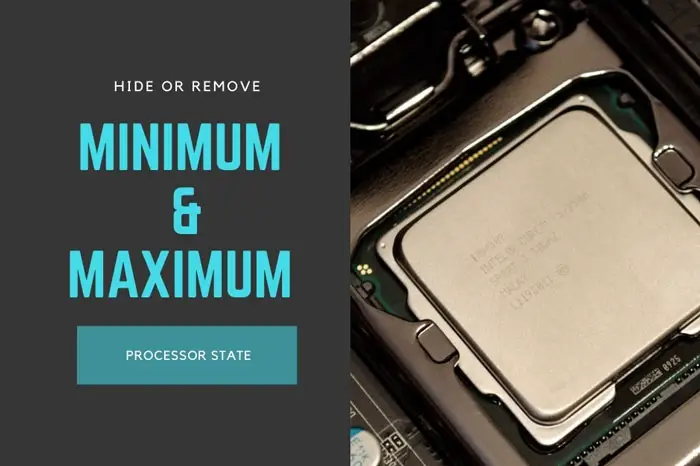Minimum and Maximum processor states help you decide how much CPU resources you want to be consumed to run Windows OS and installed apps. As we said earlier, 5% is the minimum, and 100% is the maximum resources you can allocate for your operating system and programs. However, it is possible to change this by tweaking the Processor power management settings in the Power Options panel. If you are using a desktop computer, you have only one option. However, if you are using a laptop, it is possible to show or hide these options for On battery and Plugged in states.
How to hide Minimum and Maximum processor state in Power Options
To hide Minimum and Maximum processor state in Power Options, follow these steps: To know more about these steps in detail, continue reading. At first, open Notepad on your computer and paste the following text:
Minimum processor state:
Maximum processor state:
Click on the File > Save As options and choose a location to save the file.
Next, select All Files from the Save as type drop-down list, enter a file with .reg extension, and click on the Save button. Double-click on the .reg file and click on the Yes option to remove or hide the Minimum or Maximum processor state options from the Power Options panel.
In case you want to show these options, follow this tutorial to open Registry Editor and navigate to these two paths:
Minimum processor state:
Maximum processor state:
Double-click on the Attributes REG_DOWRD value set the Value data as 2, and click the OK button.
After that, you can re-open the Power Options window to find those two options available. Tip: Check how much Power your Computer needs.
Add or remove Minimum and Maximum processor state options using Command Prompt
To add or remove Minimum and Maximum processor state options using Command Prompt, follow these steps: Let’s check out these steps in detail. It is also possible to show or hide the Minimum and Maximum processor state options using Command Prompt. If you want to follow that method, you have to open Command Prompt with administrator privilege first. For that, search for cmd in the Taskbar search box and click on the Run as administrator option. Next, you need to select the Yes option in the UAC prompt. Then, enter the following commands:
Hide Minimum processor state:
Hide Maximum processor state:
If you want to show them again, enter these commands:
Show Minimum processor state:
Show Maximum processor state:
Hope this guide helped. Read next: How to configure hidden Power Options in Windows 11/10.

